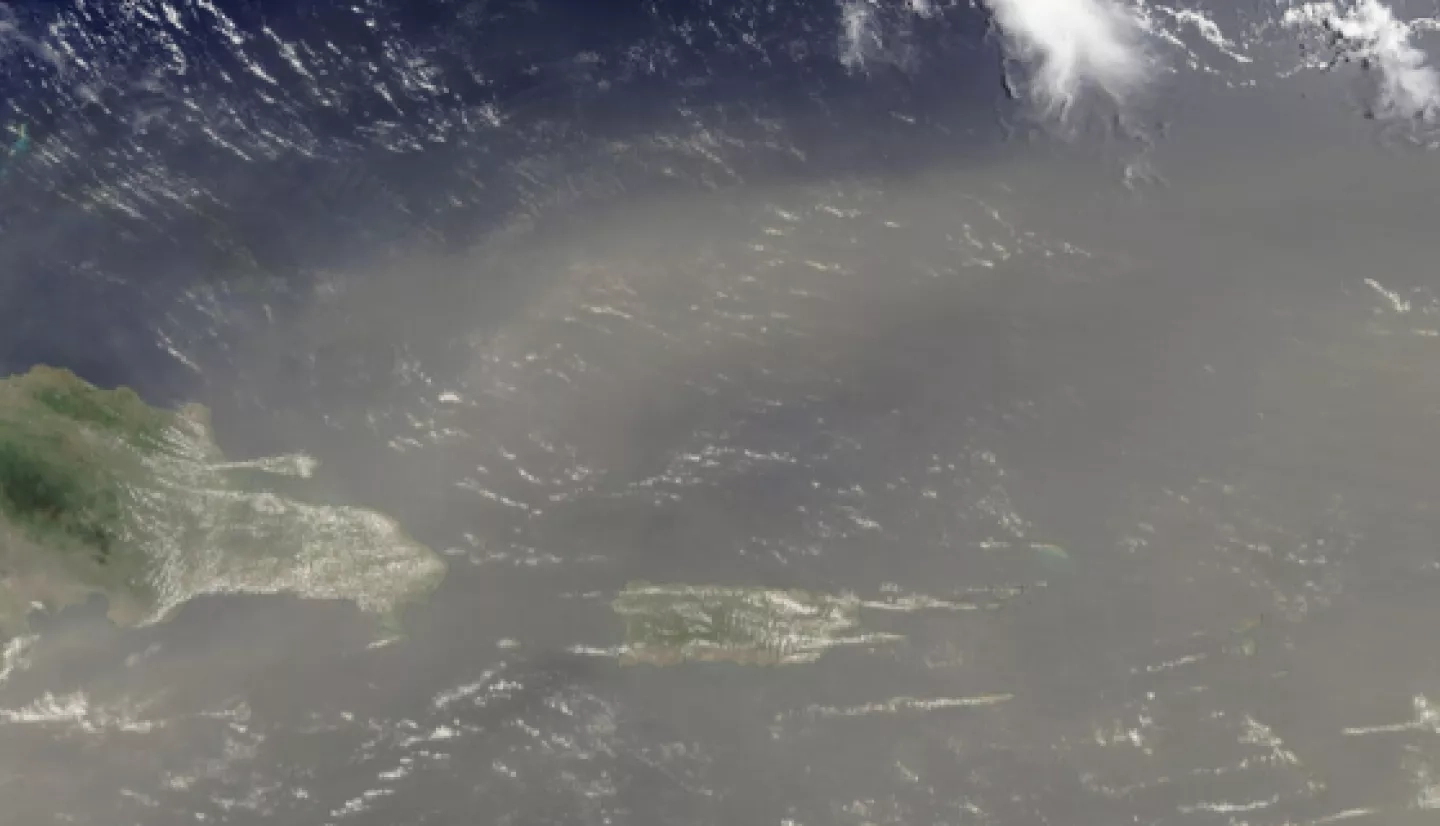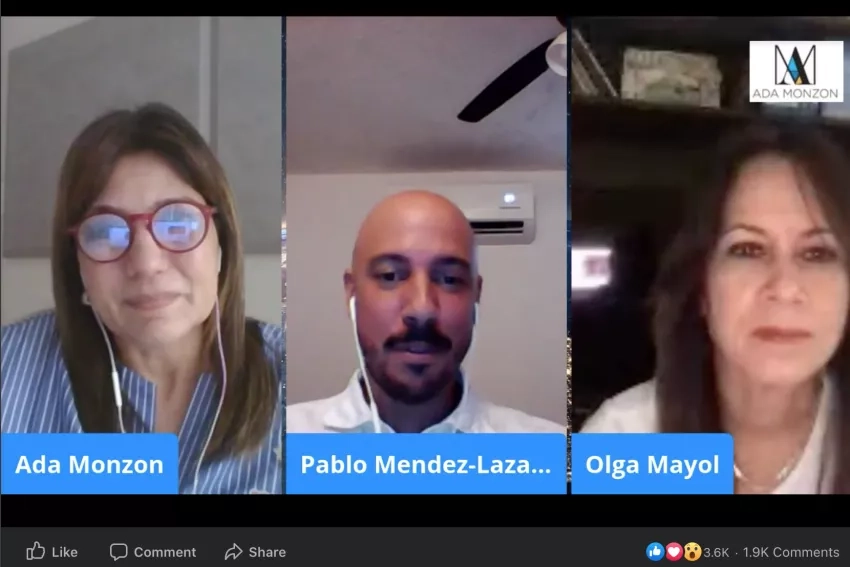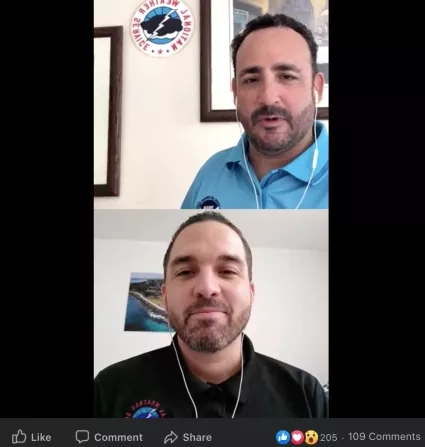Tracking dust via satellite provides three days of advance notice
Dust from the Sahara Desert loves to travel – it can ride air currents for 6,000 miles or more across the Atlantic Ocean, arriving in the U.S. and Caribbean islands and in large quantities it can dangerously affect air quality.
That’s why advance notice of the dust’s arrival can make a big difference. Now Puerto Rico has a new early warning system that includes NASA satellite data that tracks the dust, enabling local health officials to warn residents up to three days in advance.
Pablo Méndez-Lázaro, an associate professor at the University of Puerto Rico Medical Sciences Campus in San Juan, is the principal investigator for the project, funded by the Applied Sciences Health and Air Quality program area. The team was able to set up its early-warning system in time for a historically large dust storm in June 2020.
As part of his outreach efforts for this project, Méndez-Lázaro joined local meteorologist Ada Monzón for a Facebook Live broadcast that reached about 374,000 people. His team also worked with the National Weather Service - San Juan Office also hosted a Facebook Live broadcast. The broadcasts explained the hazardous conditions while providing recommendations and preparedness measures the public can take to protect themselves from the Saharan dust that arrived in June 2020.
This dust isn’t all bad – it can be a natural fertilizer for plants and coral. But in large quantities, like the levels found in the June 2020 storm, Saharan dust can cause poor visibility and air quality. It affects human health by causing irritation of eyes, nose, throat and lungs. Vulnerable populations like children, the elderly and people with asthma or other pre-existing health conditions are especially at risk.
"Being able to see this dust before it arrives is a critical tool for public health," said Méndez-Lázaro. In conducting their work, his team also overcame unusual hurdles, including significant natural disasters – a hurricane, an earthquake and a global pandemic. But providing health officials more time to prepare for hazardous conditions kept them motivated.
“We alerted federal and state agencies as well as medical doctors, which gave them time to alert the public and vulnerable populations like people with asthma,” said Méndez-Lázaro. “Before, decision-makers lacked the specific information to help the public protect themselves in advance. Now, this can be used as a tool for authorities to make decisions."
Read more about how NASA Earth observations informed this early warning system just in time for the historically large cloud of Saharan dust that reached Puerto Rico on NASA.gov: NASA Helps Puerto Rico Prepare for Saharan Dust Impacts.
Banner image: The Moderate Resolution Imaging Spectroradiometer (MODIS) on board NASA’s Terra satellite captured this true-color image of the Saharan dust plume as it approached Puerto Rico on June 22, 2020. Credits: NASA






